Is harvesting wild plants part of your survival plan? There are plenty of edible plants growing, but there are also plenty of deadly ones.
You must take time now to learn what plants around you are nutritious and safe. Otherwise you will be at a disadvantage when disaster strikes, and you can’t buy produce at the local store.
While I share ten common edible plants in this article, they might not all be available in your part of the world. Spend time in nature, learning what wild edibles are local to you. Learn to identify them, so you always know what you’re eating.
What Not To Eat
If you don’t know that a certain plant is safe, don’t assume it is. There are tests you can do to determine the edibility of the plant. This Survivopedia article goes into detail on that process. Here are five warning signs to watch for. These often indicate that a plant is poisonous, though there are exceptions.
- Umbrella shaped plants
- Lacy foliage that resembles dill or carrot tops
- Sap that is discolored or milky
- Stems covered in spines, thorns, or fine hairs
- Plants with yellow or white berries
Just as you learn to identify safe plants in your area, do the same with deadly ones. The more you know about the wild plants in your area, the more likely you are to survive when you are depending on them.
Now, let’s look at ten common wild plants that are safe, and offer some nutrition. Before you start harvesting them though, it’s important to know the growing condition of these plants.
Some are considered weeds, and many people treat them as such. You don’t want to eat wild plants that have been doused with weed killer. The chemicals can leach into the ground and cause problems for quite a while after application. Instead look for plants in wild areas, or in areas where no chemicals have been used.
Click Here To Discover Delicious Forgotten Recipes From My Grandma
Dandelions
One of the most easily identified plants, every part of a dandelion is edible. The leaves are best when young, as they develop a bitter taste as they mature.
You can harvest the leaves and stems and put them in a salad. The yellow flowers are delicious when battered and deep fried. They’re also good as a garnish to your salad. The roots can be boiled to make a nutritious tea.
Plantain
Plantain is a common source of food found in many lawns. The leaves are shaped like a wide-oval and are ribbed. You want to eat the leaves, not the stems or flower spikes.
Pick these leaves when they’re young to avoid bitterness. They taste great when sautéed in a bit of butter. Cook this leafy green however you’d cook kale.
Cattails
If you’re in a swampy area, or near a creek or lake, cattails are a good source of nutrition. You can eat the root raw or boil it. This part is underground, like a potato, so make sure to clean it well before cooking or eating.
The stem portion of this plant can also be boiled or eaten raw. Cook the leaves like you would spinach.
Even the flower spike on a cattail is edible, if eaten in the spring and early summer before it develops fluff. Boil this spike and eat it like corn-on-the-cob.
Chicory
Chicory is a bushy plant with small flowers. The flowers can be blue, lavender, or white. When coffee wasn’t available in the past, many people roasted the chicory root and ground it. Then they used this as a coffee substitute.
The flowers and leaves can be eaten raw. You can also boil the leaves for a different taste.
Lamb’s Quarter
If you’re looking for a plant that offers some protein, you want lamb’s quarter. It has easily identifiable leaves. They have jagged edges and a diamond shape.
You can eat the leaves raw, in a salad, or cook them like spinach. This plant does have oxalic acid, so you don’t want to each too much of it raw, especially if you have kidney problems. Cooking it first neutralizes this acid.
Purslane
Often found growing through cracks in the sidewalk, purslane has small yellow flowers and smooth leaves. The stems and leaves make a nutritious addition to your wild plant survival salad.
Purslane can be used as a thickener for soup if you boil the leaves and stem. This versatile plant can also be added to stir-fry or sautéed.
Pig Weed (Amaranth)
This plant can grow tall (sometimes over 6 feet tall). It’s found in gardens, fields, and other areas where the ground has been cultivated.
The flower part of this plant makes it easily identifiable. They are small and green, appearing in bristly spikes near the top of the plant.
All of this plant is edible, though the stems, leaves, and seeds are most commonly eaten. You can collect the seeds by shaking the top of mature plants. You can cook the seeds like a hot cereal, ground it into flour, or eat them raw. The stems and leaves can be boiled or eaten raw in a salad.
Curly Dock
Related to rhubarb, curly dock plants have large, wavy leaves. They grow from a taproot, and are drought-resistant.
Though poisonous to cattle and sheep, this plant offers many nutrients for people. Treat this leafy green like you would kale. You can boil it, sauté it, or even bake it with a little oil into dock chips.
Milk Thistle
Though very spiny, the milk thistle plant is edible. It’s distinguished by its light purple flowers and prickly leaves. Make sure you are using gloves when harvesting to avoid getting poked.
If you take the spines off the leaves, they are tasty eaten raw or when cooked. After you peel the tough stem, you can cook it like asparagus.
Chickweed
Found in partially shaded areas of the lawn and other cultivated ground, chickweed plants are stringy. They produce a tiny white flower.
You can eat chickweed like you would sprouts. Put it onto a sandwich for a nutrient boost, or use it as the base of your salad.
Start Eating Wild Plants Now
When you know what you’re doing, wild plans make a good food source when times are tough. But, don’t wait until the SHTF to start adding wild plants to your diet.
Get yourself a good reference book for plants in your region. Make it a point to study plants that you can eat and ones you need to avoid. You don’t want to feed your family a deadly meal because you made a mistake in your plant identification.
Instead, take the time now to learn about these plants. Learn to identify, prepare, and store them for longer term use. Eat them occasionally to introduce your taste buds to the unfamiliar tastes. This preparation will go a long way in helping you survive a disaster situation.




























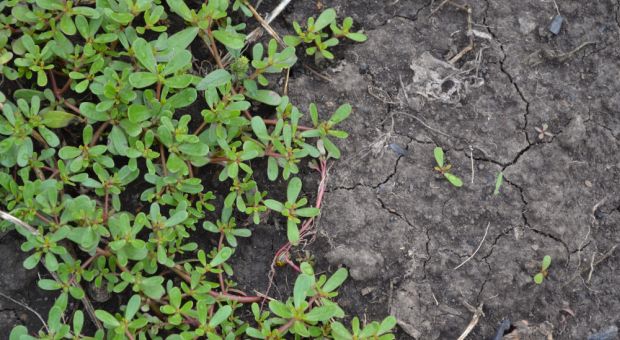

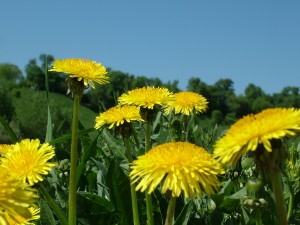
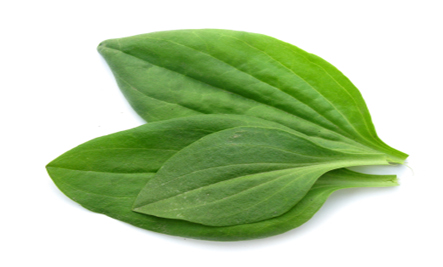


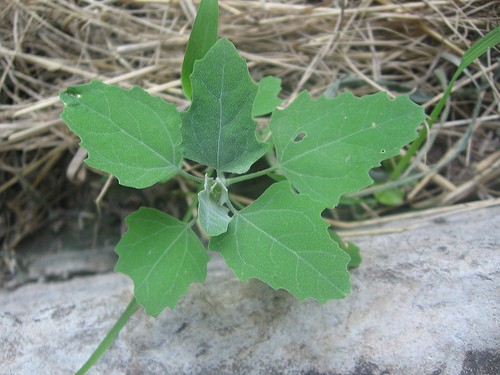


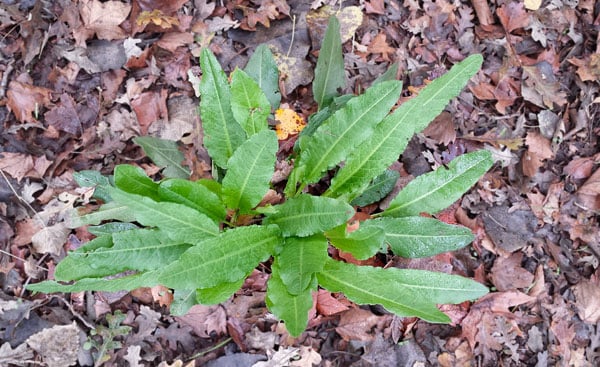










































This is a good article except that it states “…now let’s look at 10 common wild plants that are safe…”- and then there are no photos, except of the writer. Even someone who is already familiar with most of these would be helped or reassured by clarifying pictures of the various plants, rather than only descriptions…..
Hello Donald,
Thank you for the heads up! We have fixed the issue and you can now see the plants 🙂
Alex, from Survivopedia!
Hey Lisa,
Next time get stoned after you write the article so mr Kapp doesn’t have to ask for pictures and I don’t have to ask where the heck are the 5 bad plants that I shouldn’t eat which you mentioned in the title. Other than the missing parts its a very helpful article. Thanks Jake aka janetta
Photos would have helped.
Hi Matt,
We have added the photos so you can check them now!
Alex, from Survivopedia.
Hi there, ENjoyed reading about the edible weds. However, I would never be able to identify them just by a written description. Would it be possible, please, to re-issue this article with accompanying pictures of each weed?
Thanks so much,p
Suzanne
Yes I agree I would have loved to have the pictures with the name and description. Great article thou
Hi Suzane,
We have fixed the issue and you can now check the photos!
Alex, from Survivopedia!
Why no identifying photos?
You mentioned Plantain. Plantain is a form of banana. I think you probably meant Purslane, which is related to the moss rose (Portulaca)
There is a plantain closely related to banana, that’s eaten as a starchy vegetable, but there’s also a plantain weed that grows low to the ground, with wide oval ribbed leaves and a tall flower spike, that has edible leaves and can be used to slow bleeding (makes astringent paste when leaves are chewed). It isn’t exactly helpful to have both by the same name, but it is so. It is usually more clear in context which is meant.
Hello Gil,
We have updated the article with the photos so you can now see what we were talking about.
Thank you for getting involved,
Alex, from Survivopedia.
Yeah, the article shows a picture of Purslane and then leaves (deliberate) out the description. When the article came back out WITH pictures, the photo of Plantain did not show the seed stalks which help with the ID.. The plantain I’m most interested in because of it’s scarcity around here is the Rattlesnake Plantain, a native orchid.
Two different plants are called plantain. One is indeed a starchy, unsweet banana. The second is also known as “white man’s footprint”. It is a low-growing rosette of stringy, spade-shaped leaves. The mature leaves can be utilized as a poultice for boils and infections. There is slso a narrow-leafed plantain which bears a cone-shaped seedhead on a long stem, but I don’t believe it is edible or medicinal.
What about poke salad, poison but you can eat it if you cook it two(2) times just wash the leaves good and bring then up to a boil for one minute , dump the water rinse good add water for the second time bring to a boil and cook for about three minutes dump the water and rinse good now you can eat any you want I am 73 and have been eating all of my life, tastes like Spanish eat it that or fry it with scrambled eggs or put into casseroles .
Hey Willmon – I am sure you meant Spinach and not Spanish. However, if you really meant Spanish, tell me more about this.
Poke salet (aka poke salad) is STRICTLY a spring green. Only the early growth is edible, and only after it has been cooked in two changes of water. Once it starts showing purple on the stem, leave it be! I know; my dad taught me early (and he knew everything edible in the area and how to find, harvest, and prepare it because that was all they had to eat). I wish he had taught me more, and I begged him to, but much of what he knew died with him. By the way, poke berries are a sure cure for constipation – for the next week!
Greetings, Gil you are right, plantain is a form of banana. There is a plantain weed or herb too which is a short green yard weed. Both the narrow leaf and wide leaf ( pig ears ) are edible and can be used to help treat poison ivy. Squeeze and ;pinch a few leaves together and rub the green juice on an irritated area of skin. It will take away some of the itch and draw the redness to a smaller point. Its nice how poison ivy and plantains grow close together so the irritant and remedy are often close at hand. Cheers!
Thanks for the update.
Nothing is as good as being in error to spur someone to learn where he went wrong. I have been doing some research on Plantago rugelii and Plantago major. Not done yet, however.
Hey Gil, you are correct, Plantain is related to bananas. Plantain is however a valuable weed as well and is not related. These common names should be discontinued. We should all commit to knowing the REAL names of plants, the scientific nomenclature. It is not tough at all and gets people learning where all of our words came from…well, not all but the foundations of our words are from latin. Pure and simple. Arctostaphylos uva ursi, or Holodiscus discolor (the species is never capitalized) or my favorite to speakie latin is Gleditsia triacanthos inermis moraine. Common names get us in trouble and until we learn LOTS more about plants and plant ID we should NEVER eat anything out of doors. This is like sending a toddler out to go get a snack. Dangerous. Especially where mushrooms and berries are concerned! I will never ever eat a mushroom in the wilderness. I certainly know a few good ones and a few bad ones but when people learn about the lookalikes? Forget taking a risk for a tiny bit of ‘nutrition’ by eating a mushroom or berries one doesn’t even KNOW the common name or one of the common names. Mycologists, guys that KNOW mushrooms die by mushroom poisoning, quite often. Horrible way to die, yelling at your peer mycologists in the next hospital room, “Don’t forget I told you SO’!!
If people want to REALLY understand what is edible, what is not edible out in the wilderness they should at the very least be able to recite the scientific name. At the very least. Won’t protect but there is a better chance that someone who KNOWS the scientific name knows more than the person who doesn’t.
Hey Alex,
Next time get stoned after the article cause…….where are the 5 bad plants i shouldn’t eat? The title says + 5 not to eat. Who proofs these articles anyway? It will be a great article when you get all the info in it so thanks.
Hi Jake,
The first yellow heading says “What not to eat” and then there are 5 indicators for the plants that you should never eat.
Stay safe!
PDF version not downloading due to missing photo file.
Hello, Don.
Thank you for your interest in our article. We have sent the PDF with the article to your email.
Stay safe!
Alex, from Survivopedia 🙂
Not enough mention of Doll’s Eyes in these articles. They grow everywhere I’ve ever lived and both varieties, white and red berry, are deadly poison.
Oh, and a ‘milky sap’ one you CAN eat is the young pods of Milkweed (with a change of water).
Basically an interesting article. Glad I saw it with the photos. I knew most of the plants. I’ve eaten most. Few grow on the desert where I’ve lived for the last 42 years.
Ok, so what is the plant in he title picture? 10 Edible plants. Looks like purslane. I think I have a bunch of this stuff in my garden.
Is there a plant identification book you would recommend? Thanks!